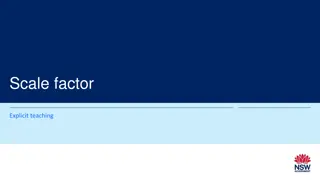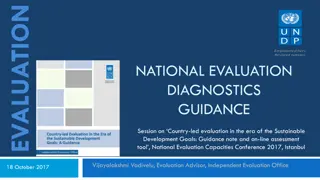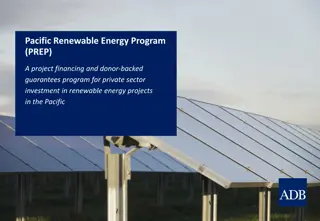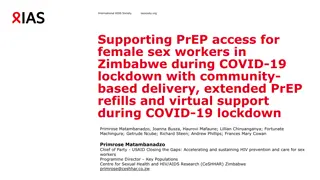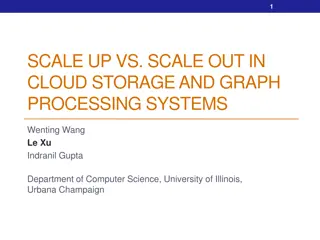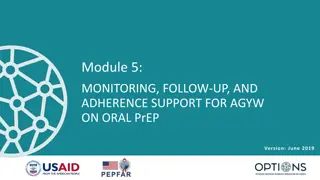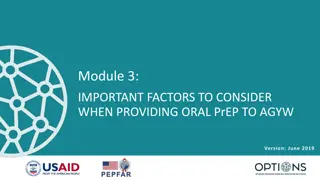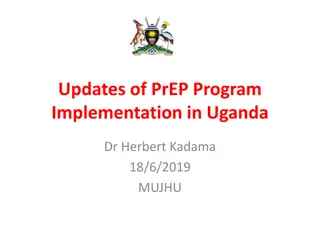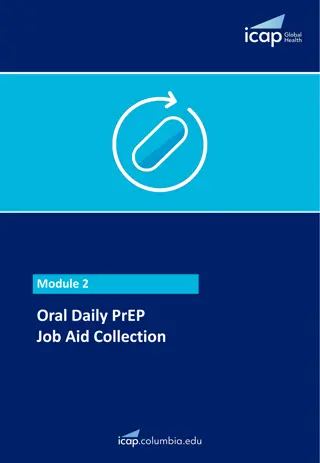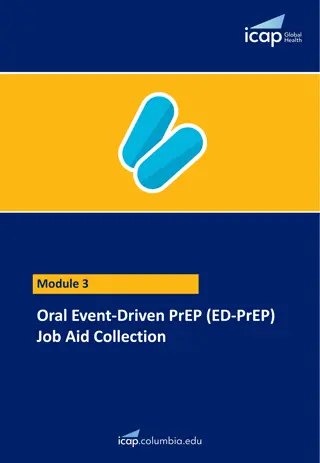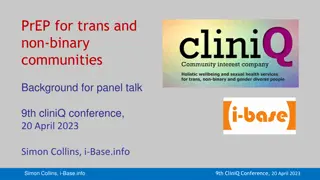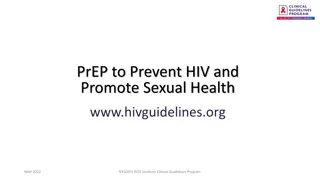Evaluation of Successful National PrEP Scale-Up in Australia
Evaluation of PrEP uptake, consumption, adherence, retention, and seroconversion in Australia, following the government-subsidized implementation from 2018. Data analysis includes linked and de-identified data on dispensed prescriptions, patient demographics, and prescriber details. Findings reveal insights into PrEP use, discontinuation rates, and predictors of adherence and seroconversion.
Download Presentation

Please find below an Image/Link to download the presentation.
The content on the website is provided AS IS for your information and personal use only. It may not be sold, licensed, or shared on other websites without obtaining consent from the author.If you encounter any issues during the download, it is possible that the publisher has removed the file from their server.
You are allowed to download the files provided on this website for personal or commercial use, subject to the condition that they are used lawfully. All files are the property of their respective owners.
The content on the website is provided AS IS for your information and personal use only. It may not be sold, licensed, or shared on other websites without obtaining consent from the author.
E N D
Presentation Transcript
Successful National PrEP Scale-Up in Australia Nicholas Medland Nicholas Medland
Successful National PrEP Scale-Up in Australia: Evaluation of uptake, consumption, adherence, retention and seroconversion Nicholas Medland1, Rebecca Guy1, Andrew Grulich1, Phillip Keen1, Jeanne Ellard2, Fengyi Jin1, Heath Paynter2, Benjamin Bavinton1, Hamish McManus1 1 The Kirby Institute, UNSW Sydney 2 Australian Federation of AIDS Organisations
PrEP in Australia Conflicts of Interest Funding for other research from Gilead 3
PrEP in Australia Introduction and background Implementation studies (2016-2018): 18,112 people participants on PrEP Decline in new HIV notifications Most marked in acute infection in Australian-born inner-urban gay men PrEP has been government subsidised in Australia since April 2018 and very actively promoted by both community and professional organisations to gay and bisexual men and their doctors Grulich et al Lancet HIV 2018 4
PrEP in Australia Objective Evaluate PrEP use using data from all subsidised dispensed prescriptions for PrEP, ART, HBV, HCV provided by Australian Government for reporting purposes 5
PrEP in Australia Methods Linked and de-identified data All dispensed and subsidised prescriptions from April 2018 Sep 2019 (extended to March 2020) Patient : anonymous linkage identifier, age, sex*, state, postcode*, benefit status Prescriber : anonymous linkage identifier, postcode Date and quantity supplied Postcodes were categorised into inner/outer urban PrEP caseload calculated (using prescriber linkage) *not possible to distinguish trans/cis gender 6
PrEP in Australia Methods Medicine cabinet method: from date and quantity dispensed calculate how long supply would last, assuming daily dosage, and any potential gap before next refill and days covered Recent usage: 90-day proportion of days covered: Highest consumption >80% Reduced consumption < 60% Discontinuation > 120 days after running out Rates and predictors of discontinuation and 90-day PDC < 60% Seroconversion: initiation of ART more than 60 days after initiation PrEP 7
PrEP in Australia Results Number of patients dispensed PrEP on at least one occasion Source: Australian Government 8
PrEP in Australia Results Discontinuation and PrEP consumption Source: Australian Government 9
PrEP in Australia Results 40000 35000 30000 25000 20000 15000 10000 5000 0 2018 Q2 0 251 269 5887 6407 2018 Q3 109 1627 1521 9337 12485 2018 Q4 1045 2760 2659 11612 17031 2019 Q1 2483 3550 3368 13124 20042 2019 Q2 4127 4285 3648 14077 22010 2019 Q3 5942 4727 4098 14738 23563 2019 Q4 7738 5306 4337 15359 25002 2020 Q1 9548 5972 4686 15702 26360 Discontinued (accum) Reduced consumption (90day-PDC <60%) 90-day PDC 60-80% Highest consumption (90-day PDC >80%) Total on treatment Highest consumption (90-day PDC >80%) 90-day PDC 60-80% Reduced consumption (90day-PDC <60%) Discontinued (accum) Source: Australian Government 10
PrEP in Australia Results (1.5 years to Sep 2019) Rates of reduced consumption and discontinuation (1.5 years to Sep 2019) Source: Australian Government 11
PrEP in Australia Results (1.5 years to Sep 2019) Predictors of Reduced Consumption (aOR)*: Female sex (2.22) Low doctor PrEP Caseload (1.52) Younger age (1.43) Outer urban doctor (1.30) Predictors of Discontinuation Female Sex (4.60) Lower doctor PrEP Caseload (1.73) Younger age (1.77) Outer urban doctor (1.73) Government benefit recipient (1.32)* *Only predictors aOR> 1.25 & p<.001 are shown 12
PrEP in Australia Results (1.5 years to Sep 2019) Incident HIV Infection (initiated ART > 60 days after initiating PrEP) Incidence rate amongst Amongst all patients: 0.95/1000PY (24 cases over 25,197 PY) Amongst patients meeting study definition of PrEP discontinuation: 2.78/1000PY (14 cases over 8,443 PY) [0.60/1000PY (14 cases over 8,443 PY) IRR 2.76 p=.007 13
PrEP in Australia Discussion Uptake is rapid and sustained Gradually becoming less inner urban and younger High rates of reduced consumption and discontinuation May reflect guideline recommended on-demand and periodic usage but predictors suggest social determinants of health Poor uptake, low consumption and high discontinuation in women Failure to distinguish cis- and trans- women May reflect guideline recommended use in pregnancy and partners of men initiating ART or failure to identify the role of PrEP in women HIV Incidence PrEP works, so expect higher incidence in those who stop it 14
PrEP in Australia Limitations Data not available: Risk exposure category Trans and gender diverse Indirect measure of incidence Doesn t tell us about who isn t taking PrEP 15
PrEP in Australia Conclusion Successful PrEP scale-up in the target population Disparities in uptake, consumption and continuation need to be urgently investigated Do people stop PrEP because they at low risk or are they are at now unprotected from ongoing high risk? Are people who consume less, successfully covering risk? What is the role of PrEP in women? 16
PrEP in Australia Acknowlegements Australian Government: data and early subsidy Co-authors Rebecca Guy, Andrew Grulich, Phillip Keen, Jeanne Ellard, Fengyi Jin, Heath Paynter, Benjamin Bavinton, Hamish McManus Community of affected people and health workers who have made PrEP and biomedical HIV prevention such an outstanding success 17



